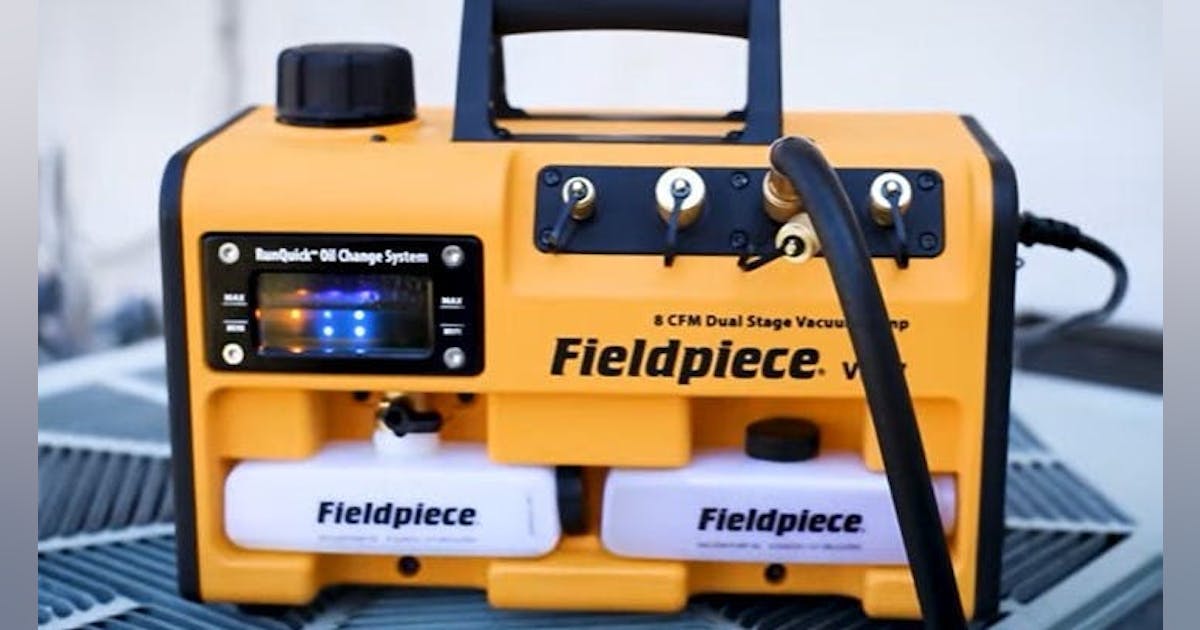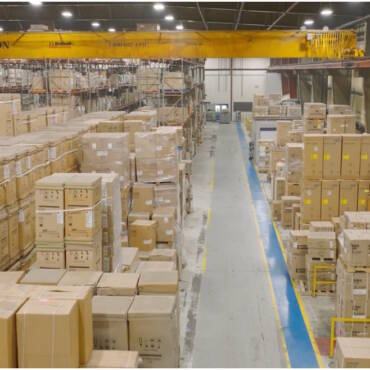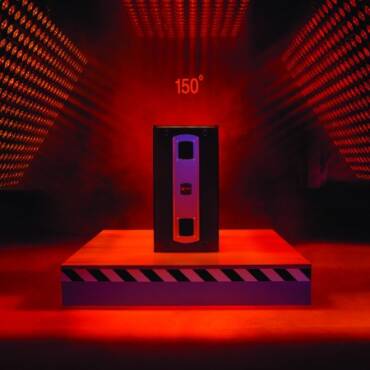Courtesy of Fieldpiece Instruments
A vacuum pump is a powerhouse machine that removes air, gases, moisture and contaminants from a system to create a clean environment for refrigerant. These efficient and powerful machines need clean oil to perform at their peak. When oil becomes cloudy or saturated, the pump won’t work as well, and pulling a deep vacuum takes longer.
Double-duty Oil
The oil in the vacuum pump acts as both a lubricant and as a sealant. It keeps the pump vanes (rotor blades) lubricated and helps keep a proper seal for an optimal vacuum. The deep vacuum that the pump creates helps push moisture and non-condensables from the system to the pump, ensuring the system is ready for refrigerant. This process contaminates the oil in your vacuum pump, which negatively impacts the pump’s performance and efficiency by compromising its internal seal. Pumps with contaminated oil will struggle to create a strong pressure differential, leading to increased evacuation time and eventual damage to the pump.
When to Change the Oil
The need to change your oil will depend on several factors. The most effective way to maximize performance and efficiency of your vacuum pump is to change the oil after each evacuation. In humid environments systems are more likely to contain moisture. Systems with more moisture and non-condensable contaminants present will contaminate your oil faster, requiring more frequent changes to maintain performance. Moisture contamination is easy to spot because the oil looks milky or cloudy. Other contaminants can sink to the bottom of your oil reservoir, so vacuum pumps with better reservoir visibility, such as the large window on the Fieldpiece vacuum pumps, allow for more accurate monitoring.
Another key indicator that it’s time for an oil change is pump efficiency. When pulling a vacuum, if the rate at which your microns are decreasing starts to level out, this could signal the need to change oil. When pump efficiency starts to wane, pulling a deep vacuum becomes more time-consuming. Note that the time to pull a vacuum will vary depending on the size of the system, atmospheric conditions such as humidity, and the efficiency of your evacuation setup.
Oil Changes on the Fly
Some pumps on the market allow the oil in the pump to be changed while it’s pulling a vacuum, like the RunQuick® oil change system on Fieldpiece vacuum pumps. Towards the end of the evacuation is when you need fresh oil the most, so oil changes on the fly are key to working faster and smarter.
Get a Vacuum Pump that Works for You
Since clean, dry oil is crucial for faster evacuations, consider vacuum pumps that make oil changes quick and hassle-free. Fieldpiece vacuum pumps are powerful, portable and offer oil changes on the fly, saving you time on every evacuation. See the entire line of pumps, oil and other HVAC tools built and designed for techs.
Whether you require installation, repair, or maintenance, our technicians will assist you with top-quality service at any time of the day or night. Take comfort in knowing your indoor air quality is the best it can be with MOE heating & cooling services Ontario's solution for heating, air conditioning, and ventilation that’s cooler than the rest.
Contact us to schedule a visit. Our qualified team of technicians, are always ready to help you and guide you for heating and cooling issues. Weather you want to replace an old furnace or install a brand new air conditioner, we are here to help you. Our main office is at Kitchener but we can service most of Ontario's cities
Source link




Add Comment